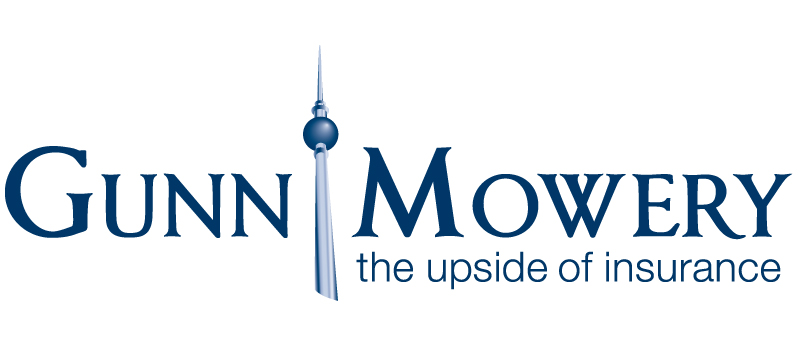
COVID-19 is changing rapidly and so is the information regarding how healthcare is responding to the coronavirus. We are monitoring all of the healthcare carriers and we will update this post as we gain knowledge and understanding. The best thing our clients can do is be well informed about the COVID-19 pandemic and we are here to help you make the best decisions for your business and employees.
Q: How do I know if my insurance will cover testing and treatment related to COVID-19?
A: All major medical, Affordable Care Act (ACA)-compliant plans, including those available through the federally facilitated marketplace (www.healthcare.gov), should cover medically appropriate COVID-19 diagnostic testing and associated treatment. All Central Pennsylvania insurers have already announced they will cover medically appropriate COVID-19 testing without any copay's, deductibles, or cost-sharing for consumers. Click here to see what your healthcare provider is doing for COVID-19 tests and treatments.
For Self-Funded groups this means that cost-sharing (i.e. deductibles, copayments, and coinsurance) associated with physician-ordered diagnostic testing for coronavirus will be waived to the member. However, the cost will be deducted from the Plan Sponsors claim fund.
For Fully-Insured groups, this means that cost-sharing (i.e. deductibles, copayments, and coinsurance) associated with physician-ordered diagnostic testing for coronavirus will be waived to the member.
Q: What if I have health concerns that require emergency medical services?
A: In the event emergency medical services are requested or needed by individuals who have contracted COVID-19 or believe they may have come in contact with the coronavirus, insurance carriers must cover emergency services for an emergency medical condition at in-network levels subject to your benefit plan. Emergency services pertaining to coronavirus response include transportation services, such as ambulance services, as well as inpatient and outpatient hospital services that are needed to evaluate or stabilize the patient.
Q: Can my insurance carrier cancel or refuse to renew my insurance policy if I am diagnosed with COVID-19 or a preexisting respiratory illness?
A: No. The Pennsylvania Insurance Department prohibits individual or group accident and health insurance carriers from imposing any pre-existing condition exclusions, including in connection with COVID-19. Federal law and state regulations provide protections against preexisting condition exclusions in health insurance coverage, as well. However, preexisting condition consumer protections do not apply to short-term, limited-duration health insurance coverage or excepted benefit policies.
Q: Due to Governor Wolf's orders to close the physical offices of all “non-life-sustaining” businesses, what are some staffing considerations you can suggest?
A: Many businesses are having to consider their staffing options, specifically furloughs, layoffs and reductions in force because of the coronavirus pandemic. All three of these terms describe actions that are intended to achieve cost savings by reducing a company's payroll costs. Even though the words have been used interchangeably, their true meanings are quite different.
- Furlough. A furlough is considered to be an alternative to a layoff. When an employer furloughs its employees, it requires them to work fewer hours or to take a certain amount of unpaid time off. For example, an employer may furlough its nonexempt employees one day a week for the remainder of the year and pay them for only 32 hours instead of their normal 40 hours each week. Another method of furlough is to require all employees to take a week or two of unpaid leave sometime during the year. Employers must be careful when furloughing exempt employees so that they continue to pay them on a salary basis and do not jeopardize their exempt status under the Fair Labor Standards Act (FLSA). A furlough that encompasses a full workweek is one way to accomplish this, since the FLSA states that exempt employees do not have to be paid for any week in which they perform no work. An employer may require all employees to go on furlough to prevent the spread of COVID-19, or it may exclude some employees who provide essential services. Generally, the theory is to have the majority of employees share some hardship as opposed to a few employees losing their jobs completely due to the coronavirus outbreak.
- Layoff. A layoff is a temporary separation from payroll. An employee is laid off because there is not enough work for him or her to perform. The employer, however, believes that this condition will change and intends to recall the person when work again becomes available. Employees are typically able to collect unemployment benefits while on an unpaid layoff, and frequently an employer will allow employees to maintain benefit coverage for a defined period of time as an incentive to remain available for recall.
- Reduction in Force. A reduction in force (RIF) occurs when a position is eliminated without the intention of replacing it and involves a permanent cut in headcount. A layoff may turn into a RIF or the employer may choose to immediately reduce their workforce. A RIF can be accomplished by terminating employees or by means of attrition.When an employee is terminated pursuant to a reduction in force, it is sometimes referred to as being "riffed." However, some employers use layoff as a synonym for what is actually a permanent separation. This may be confusing to the affected employee because it implies that recall is a possibility which may prevent the employee from actively seeking a new job.
Q: How is COVID-19 affecting employees who have COBRA?
A: At this time, the direction for how to handle COVID-19 and employees in these circumstances has yet to be released from the individual carriers. However, federal guidelines require COBRA election notices to be sent to qualified beneficiaries within 14 days of the qualifying event. This will allow some time for insurance carriers to release their guidance which will assist employers to finalize their plan of action. If you need assistance with your COBRA administration, please reach out to our Gunn-Mowery COBRA administration team at [email protected].
Q: Can you explain the new FMLA and paid sick leave regulations?
A: Click here for a summary of the new FMLA and paid sick leave regulations. There is very limited guidance on the practical application of the new regulations, but the information may still be helpful.
If you have more than 25 (and possibly up to 50) employees, the new regulations would apply to:
- The first 10 days of the emergency FMLA leave may consist of unpaid leave, but the employee must be paid for each subsequent day of leave. That payment would be calculated based on the number of hours the employee would normally be scheduled to work, and would not be less than two-thirds the employee's regular rate of pay. But the bill provides that this amount will not exceed $200 per day and $10,000 "in the aggregate."
- The bill exempts employers that employ fewer than 25 employees from the job-protected aspect of the emergency FMLA leave provided a specific set of conditions are met, including if a leave-taking employee's position is eliminated due to "economic conditions" or other changes that affect the employer's operations resulting from the public health emergency. The bill allows the Secretary of Labor to exempt employers with fewer than 50 employees from the emergency FMLA leave requirement, "when the imposition of such requirements would jeopardize the viability of the business as a going concern."
- Second, the bill mandates that employers with fewer than 500 employees provide paid sick time to workers. This applies if the worker is sick with or has been quarantined due to COVID-19, is experiencing symptoms of the disease and seeking medical attention, or is caring for a child in the event of a school closure or unavailable child care provider, among other situations. Full-time employees are entitled to 80 hours of such leave, while part-time employees are entitled to time equal to the number of hours they work on average over a two-week period. The leave doesn't carry over from one year to the next.
The Secretary of Labor may exempt employers with fewer than 50 employees from the paid sick leave requirement as well.
Please contact the Gunn-Mowery Benefits Team with any questions pertaining to healthcare and COVID-19.

